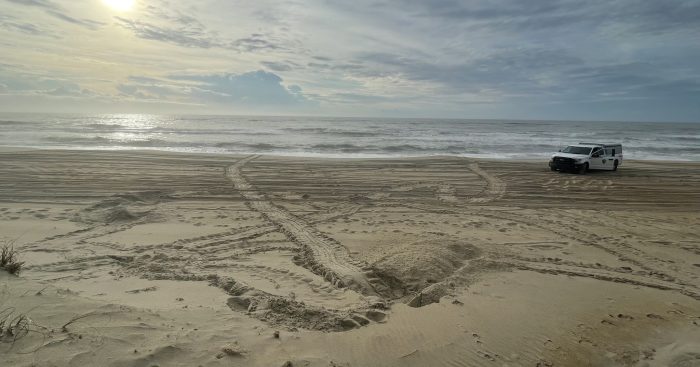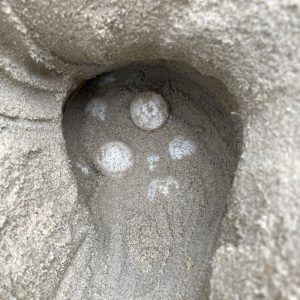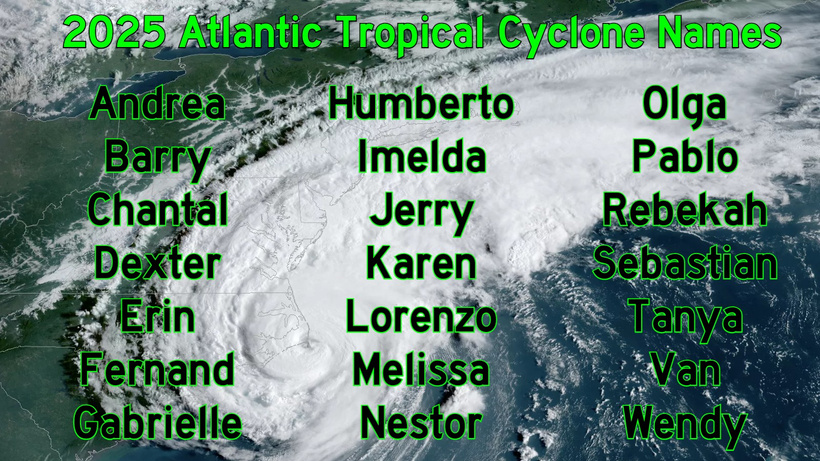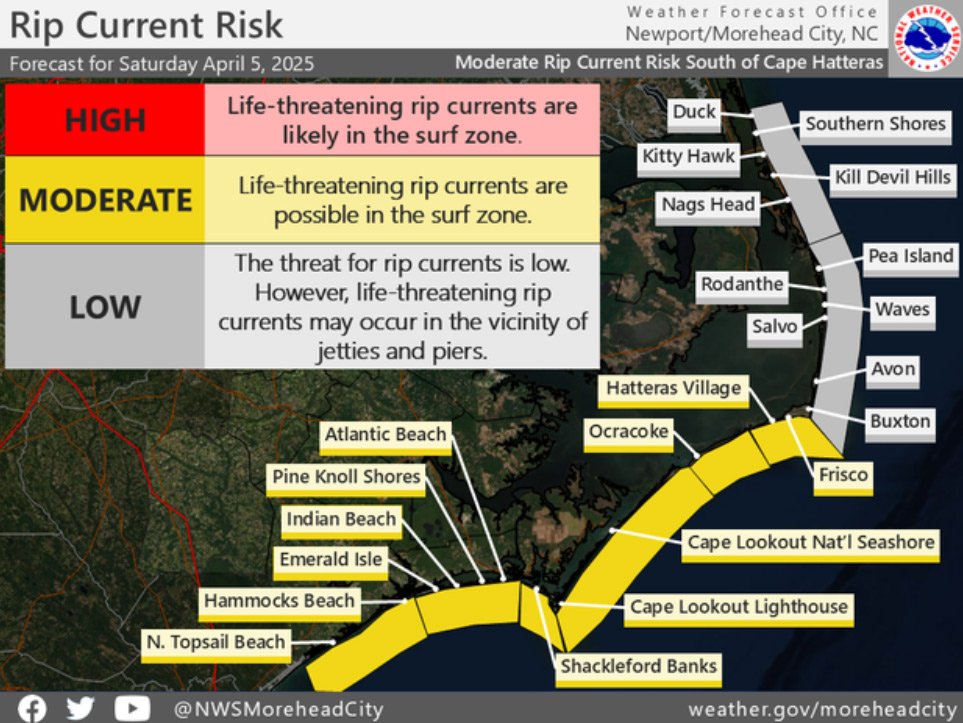Latest sea turtle nest ever recorded in North Carolina discovered in Frisco on Dec. 3

On Sunday morning, December 3, a Green sea turtle nest was found by Cape Hatteras National Seashore (CHNS) biologists in the ORV Ramp 49 vicinity of Frisco on Hatteras Island.
This newly laid nest represents the latest sea turtle nest ever discovered at the National Seashore, as well as the entire state of North Carolina. The previous late-nesting record for CHNS and the state occurred on October 31, 2020, when another Green sea turtle nest was also found on Hatteras Island in the Buxton/Frisco area.

“By looking at her crawl patterns, this Green sea turtle crawled erratically before deciding where to lay her eggs,” stated CHNS in an online update. “We aren’t the only ones that have been enjoying this mild weather in December!”
The new nest also means that 2023 now boasts the second-highest number of turtle nests reported on Ocracoke, Hatteras, and Bodie Islands since data collection began.
The top three years for sea turtle nesting activity within CHNS have all occurred within the past five years, and are as follows:
- 2019 – 473 nests
- 2023 – 380 nests
- 2022 – 379 nests
Of these 380 nests in 2023, 324 were Loggerhead sea turtles, 52 were Green sea turtles, 3 were Kemp’s Ridley sea turtles, and one was a Leatherback sea turtle.
In fact, 2023 also marked the first time that a Leatherback sea turtle nest was discovered on Ocracoke Island in 11 years. (The nest was identified in June, and successfully hatched in late August with 19 baby sea turtles making their way to the ocean.)
Sea turtle nests have been monitored at CHNS since the 1970s. The Outer Banks serves as seasonal breeding grounds for endangered sea turtles, and the nesting season typically begins slowly in mid-to-late May, before it heats up in the prime summer months. In 2023, the first sea turtle nest was discovered on May 12 on Ocracoke Island.
The Green sea turtle nest laid on December 3 has been marked off to protect it from foot or vehicle traffic, and if successful, it will hatch in approximately 50-70 days. According to the Network for Endangered Sea Turtles, constant nest temperatures need to be at least 75 to 77 degrees Fahrenheit for sea turtle embryos to hatch. Although there are many factors that can go into determining the temperature of a nest, (such as depth of the nest, type of sand, weather conditions, and metabolic heating from growth of the embryos), a colder average nest temperature takes longer to incubate than a hotter nest.








